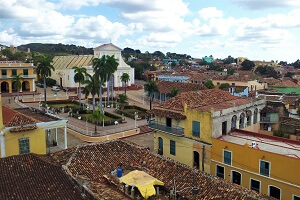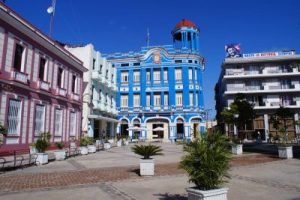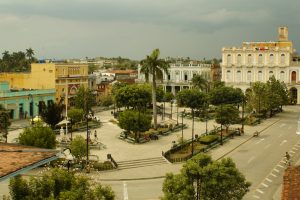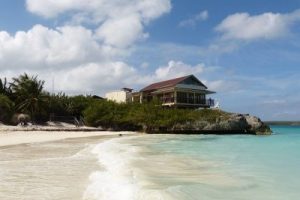Sierra del Escambray
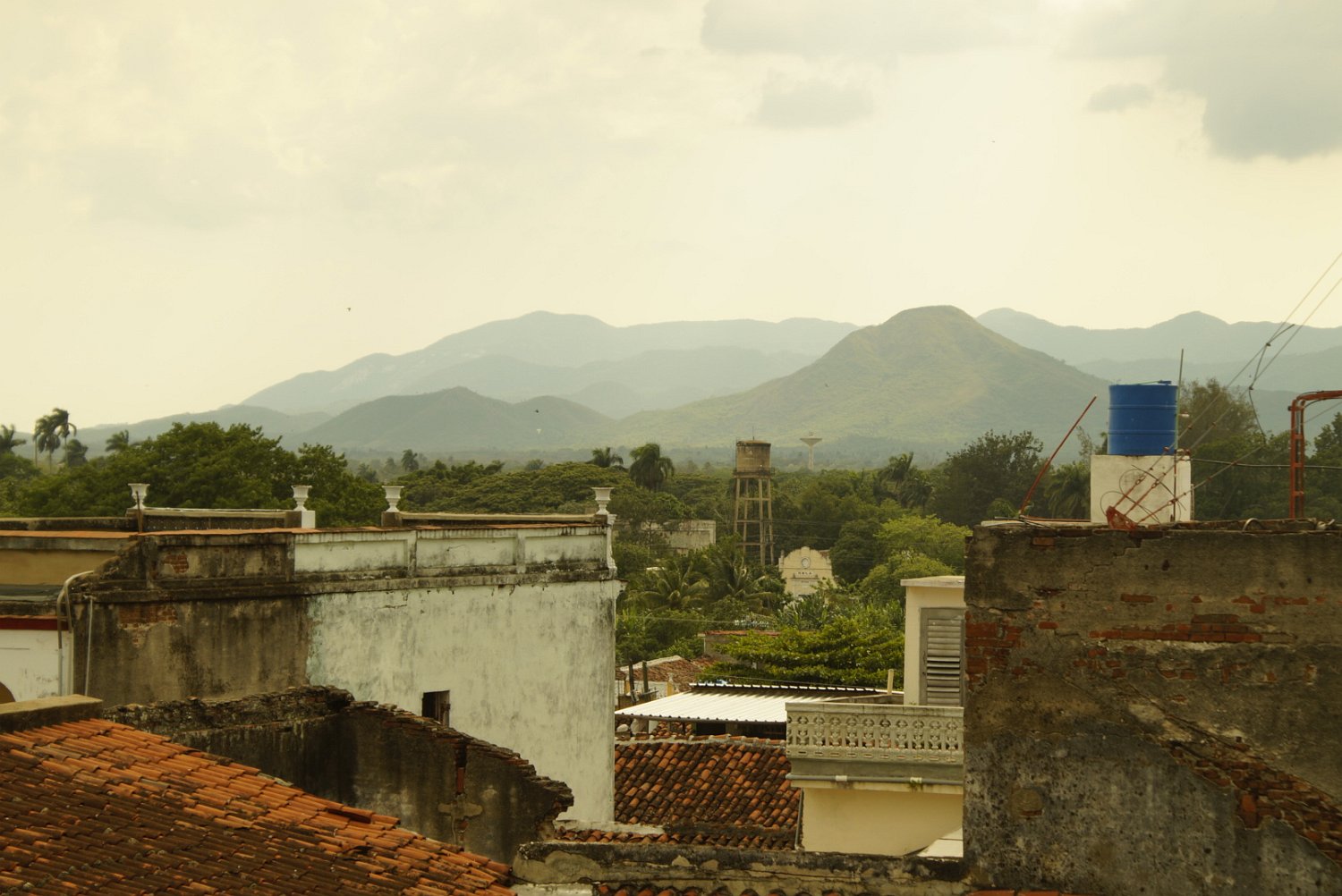
Updated: Apr 24, 2022
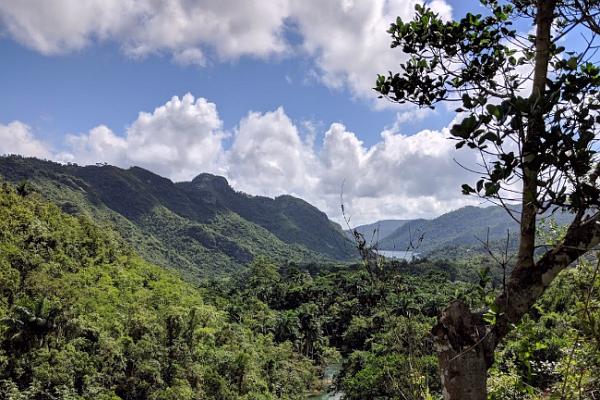
Updated: Apr 24, 2022
Slightly off the main tourist routes in Cuba you will find the Sierra de Escambray mountain range, which is one of the most beautiful natural treasures in Cuba. The highest elevation of the green mountains measures over 1000 meters. Inside the mountains lies the Topes de Collantes National Park, where caves, rivers and waterfalls can be explored.
If you have had enough of the urban hustle and bustle in the vibrant city of Havana or of the all-inclusive resorts in Varadero, you can find tranquility and relaxation in the untouched nature in the mountains of the Sierra de Escambray. During the hot days, of which Cuba has many, the climate in the mountains is pleasantly fresh. During the winter, it is recommended to bring a sweater or a light jacket because of the high altitude.
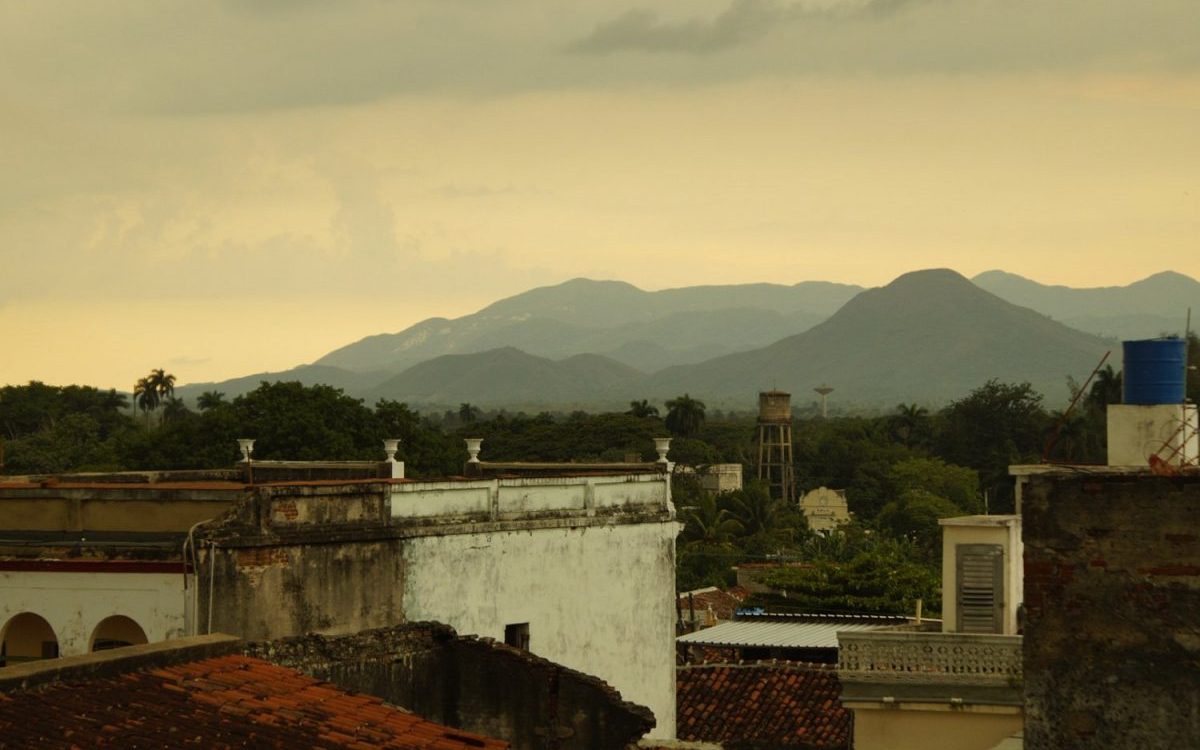
The Sierra del Escambray from Sancti Spíritus
The mountain range is located in central Cuba, south of Santa Clara, east of Cienfuegos and slightly north of Trinidad. Travelers visiting any of these worthseeing destinations should definitely consider an excursion to the tropical mountain landscape. After the Sierra Maestra, the Sierra de Escambray is Cuba's second most important mountain range, and it is one of the most spectacular in the country. It has a variety of partly spectacular natural beauty to offer.
Nature, Ecotourism & National Parks
The region is an important destination for ecotourism, offering many exciting outdoor activities to visitors. In addition to the tropical nature with a rich flora and fauna, in the middle of the mountains there are several waterfalls as well as the beautiful Hanabanilla Lake. Due to the pleasant high altitude climate at about 800 meters above sea level, the region is also an important center of Cuban health tourism. Already before the revolution, a huge cure hotel was built in the middle of the mountains, which is still used in parts for health purposes.
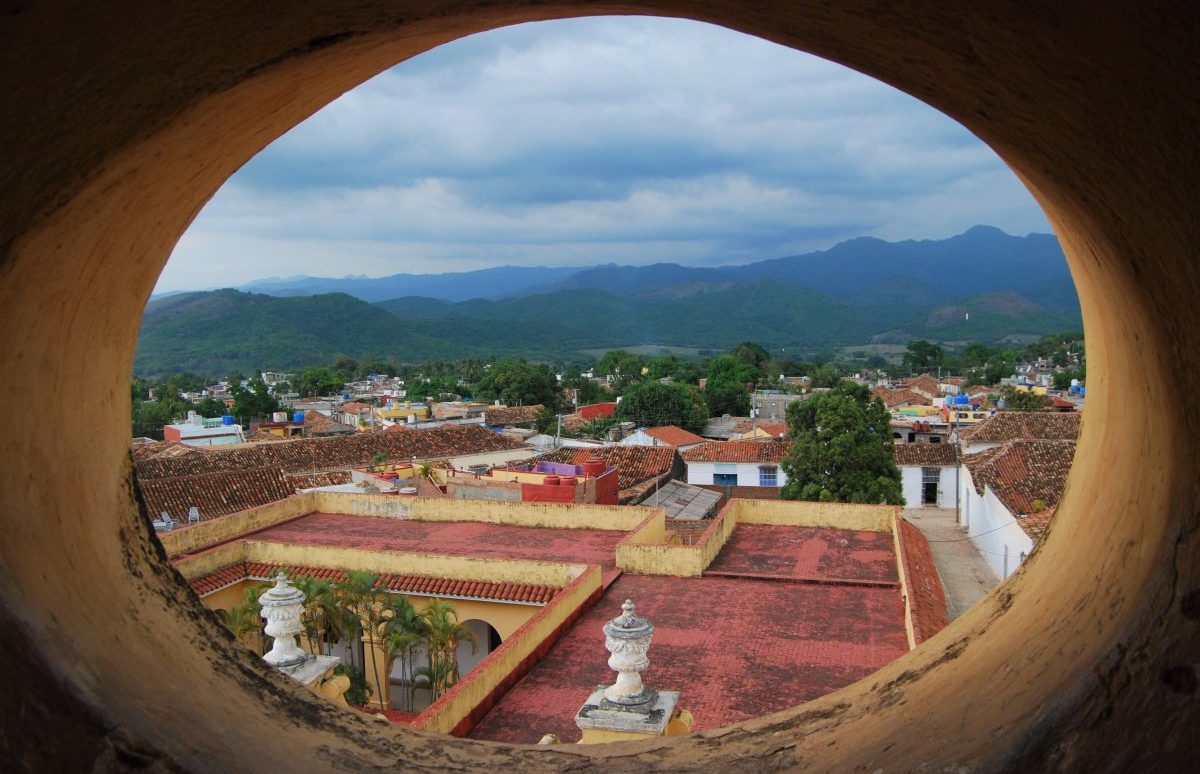
The Sierra del Escambray from Trinidad
The mountains have an extension of about 80 kilometers from east to west as well as from north to south and covers a total area of about 600 square kilometers. The highest elevation is Pico San Juan, which has an altitude of 1156 meters above sea level at the summit. The Agabama River divides the mountain range into two areas: the western part of the mountain range, the Guamuhaya Mountains, and the eastern part, the Sierra de Sancti Spiritus.
The western part of the mountains is the most important for tourism, because there are two national reserves: the Parque Guanayara and the larger Parque Natural Topes de Collantes.
In addition to its treasure of natural beauty, the mountain landscape is also significant in the history of the Cuban Revolution. In 1961, after the failed CIA-initiated invasion attempt in the Bay of Pigs, counter-revolutionaries tried to take refuge in the remote mountains.
Three options to explore the Sierra del Escambray
Due to the central location, a visit is ideal beginning in Santa Clara, Cienfuegos and Trinidad. If you are traveling from one of these three cities, you should expect a travel time of around 2 hours. The best way to explore the region is by rental car. The Mountains are sparsely populated and therefore there is practically no public transportation and also the Viazul bus company do not serve the region.
Basically, there are three ways to get there. First, you can book guided tours that depart from the mentioned cities. Secondly, you can arrive individually by rental car or thirdly, one can hire a private driver.
Let us take a closer look at these three options:
- Guided tours can be undertaken from Trinidad, Varadero and Cienfuegos. Coming from Trinidad, it is possible to choose between having your own driver with a jeep or to make the way in an old Russian truck, together with other travelers. The truck is the cheaper option. Excursions can be booked at one of the Ecotur or Cubatur office as well as in some hotels.
- Who travels by rental car can make their own way into the mountains. A charming route runs from north to south, along the connecting road between Santa Clara and Trinidad. Starting from Trinidad, it goes about 20 km quite steeply over a curvy road up into the mountains. On the way, you first pass a viewpoint (), from which you can enjoy an impressive panorama over the mountains and the Caribbean Sea. A little later you will reach the high altitude resort of Topes de Collantes, where the impressive Escambray Spa Hotel is located. Another route runs from Cienfuegos eastward via El Cafetal () through Parque Guanayara. If you drive this route yourself, you have to expect a quite narrow and partly very steep road.
- Without your own rental car, but still individually, you can explore the region with a private driver. For an extended day trip, one should calculate roughly 80 - 120 USD per vehicle including driver. Many Casas have cooperating drivers and are happy to help with the arrangement and planning of the excursion.
Sights & Activities
In the mountains of the Sierra del Escambray, at an altitude of about 800 meters, there are two national parks, the Parque Topes de Collantes and the Parque Guanayara. Both parks are covered with lush green vegetation in rainforests and in some parts pine, eucalyptus and deciduous forests. The two parks offer a number of sightseeing opportunities. It is possible to see rivers, underground cave systems, lakes, waterfalls and rock formations. From several viewpoints one can enjoy breathtaking panoramas.
In the center of the mountains lies the small village of Topes de Collantes, which is dominated by the Escambray Spa Hotel. The hotel was built as early as 1954, during the reign of Batista. In front of the hotel there is a small information center where one can get information and make reservations for guided tours. For those who prefer not to go with other travelers, there is also the possibility to take individual tours in jeeps.
The natural parks Topes de Collantes & Parque Guanayara
The Topes de Collantes National Park is located near the south coast, just around 20 km north of Trinidad. There is also a same-named small village, which is dominated by an impressive hotel building. The complex appears like a spaceship that has landed in the middle of nature. The building was originally constructed as a pulmonary sanatorium. Today, a government-owned company runs the Escambray Spa Hotel.
Waterfalls
- El Nicho is a small natural park known mainly for its beautiful waterfall. There is a natural pool where you can take a refreshing swim just under the waterfall. Furthermore, there is a viewpoint to be climbed and a cave to be visited within the area. The trails are somewhat narrow in places, very steep and can be slippery. Sturdy shoes are highly recommended. If you arrive by rental car, it is better to take the road via Cumanayagua and not via Cuatro Vientos. There is also a restaurant and a guarded parking. The entrance fee is 10 USD.
- The Vegas Grande waterfall is not only one of the most beautiful falls in the region, but also perfect for a refreshing swim. It is possible to jump through the waterfall into the emerald green water. However, if you want to get to the waterfall, you first have to walk steeply downhill and then steeply uphill. Especially in high season, when many tourists are on site, the Vegas Grande waterfall is from experience less visited than the easier to reach El Nicho.
- Visitors who want to visit the Salto del Caburní should be quite good on foot. A quite demanding hiking trail leads through the jungle to a walkable waterfall, which has a natural pool at the upper and lower end. The entrance fee is 10 USD.
- The Salto El Rocio is located in the Guanayara National Park. The fall can be reached by a stunning hike of about three kilometers, passing through tropical forests with lots of bamboo.
Museums
- At the Tope de Collantes village there is a small coffee museum. The so-called Casa Museo del Café are different devices and stations presented, which were used for the traditional coffee bean processing. Today, visitors get an insight into the coffee processing, from drying to grinding. Sometimes even the machines themselves can be operated. In Cuba, roasted coffee is often very dark to black. The color is due to added sugar while roasting. The sugar caramelize and so the torrefacto coffee is produced. Of course, the coffee can also be tasted on the spot.
- The enormous Escambray Hotel houses the Museo de Arte Cubano Contemporáneo, which exhibits contemporary Cuban art in various halls. A visit is commendable simply because of the interesting architecture. The entrance fee is 2 USD.
Natural Sights
- The Hacienda Codina is located in the middle of the tropical rainforest of the national park. There is a simple restaurant on the property. It is also possible to spend the night in one of the tents. The complex is also the starting point of the Alfombra Mágica hiking trail. One can also visit the cave Cueva de Altar. Those who do not want to hike to the Hacianda can join a group excursion in an old Russian truck.
- At the northern edge of the Sierra del Escambray lies the Hanabanilla reservoir. This is not only a popular destination for anglers, but also serves as a power supply. A power plant supplies the economic centers of Santa Clara, Cienfuegos and Trinidad with clean energy. Amazing boat trips can be made on the lake, leading to a waterfall and a restaurant in the middle of the beautiful landscape.
- In the center of the mountains lies the tiny village of Jibacoa. The village has a few restaurants, a pharmacy and a small supermarket. Not far from the center of the village is a dam that borders the foothills of Lake Hanabanilla.
- The Cueva Martín Infierno cave is home to the largest stalagmite in the world. The cave has a total length of 776 meters and a total height difference of 210 meters. It remained undiscovered until the late 1960s. The five-million-year-old stalagmite has a height of nearly 70 meters, a diameter of 30 meters and an estimated weight of 100,000 tons. The cave is not yet freely accessible, but can be visited only with prior permission.
Activities
- The Canopy Topes de Collantes makes you fly over the jungle attached with a rope. There are four sections, two shorter and two longer.
- It is possible to rent rowing boats on the Hanabanilla lake. With a bit of luck, there are also motorboats available.
- There are several possibilities to do horseback riding excursions. Horseback riding can also be started from Trinidad up into the mountains.
Hiking trails
In the mountains of the Sierra de Escambray are a number of beautiful hiking trails, they so called senderos. Most travelers take a trip to one of the waterfalls, which includes a more or less challenging hike. Some trails are quite easy to walk, but you should still wear proper footwear (at least sneakers). Often the shoes get wet, but almost always dirty. Anyone who wants to swim in one of the many natural pools should ideally not forget their bathing suit. Bathing shoes can also be helpful.
For those who would like to go on extended hikes, it is possible to combine multiple trails. However, it should be noted that access to the trails is not free and that each entrance fee must be paid separately.
An overview of the different trails is given in the following table.
| Trail | Admission (USD) | Distance (km) | Duration (h) | Difficulty |
| Huellas de la Historia (El Cubano) | 10 | 3.6 | 3 | medium |
| Caburni | 10 | 3.5 | 3 | high |
| Jardin de Gigantes | 5 | 1.3 | 3 | medium |
| Vegas Grandes | 10 | 1.5 | 1.5 | high |
| La Batata | 5 | 2.50 | ||
| La Alfombra Magica | 7 | 1.2 | 1.5 | medium |
| Gruta Nengoa | 6 | 1 | 0.45 | high |
| La Barbera | 5 | |||
| El Reino de las Aguas (El Nicho) | 10 | 2 | 2 | |
| Ruta Natural (Atahalaya) | 16 | 6 | high |
As described, ambitious hikers can combine different routes. For example, a hike to the two waterfalls Caburni and Vegas Grandes can be done in a single tour. The beginning and end parts, respectively up to and from the waterfall, are the regular routes. These trails are signposted and easy to follow. The part in the middle is more difficult. There are river crossings, so it should be hiked only in dry weather or not after heavy rains. The courses of the trails can be seen quite well on the maps.me map (see Maps & Navigation).
­
Accommodation
The mountain region is quite sparsely populated, so there are not many accommodations to choose from. However, state-owned companies operate a few simple hotels in the village of Topes de Collantes, as well as a hotel at the Hanabanilla Lake. In Tope de Collantes there is the large spa hotel Escambray and the hotel Los Helechos. In addition to this hotrels, there is an inexpensive private accommodation, the Eco-Alojamiento El Manantial, which is embedded in wonderful nature and makes an overnight stay a special experience.
The two hotels in the village of Topes de Collantes are located in the middle of the national park, but can only be recommended with reservations, as they are seriously outdated. Although the hotels are visited by tourist groups, vacationers who want comfort should better choose a different accommodation. The hotel at the Hanabanilla water reservoir is also quite simple, but in better shape.
